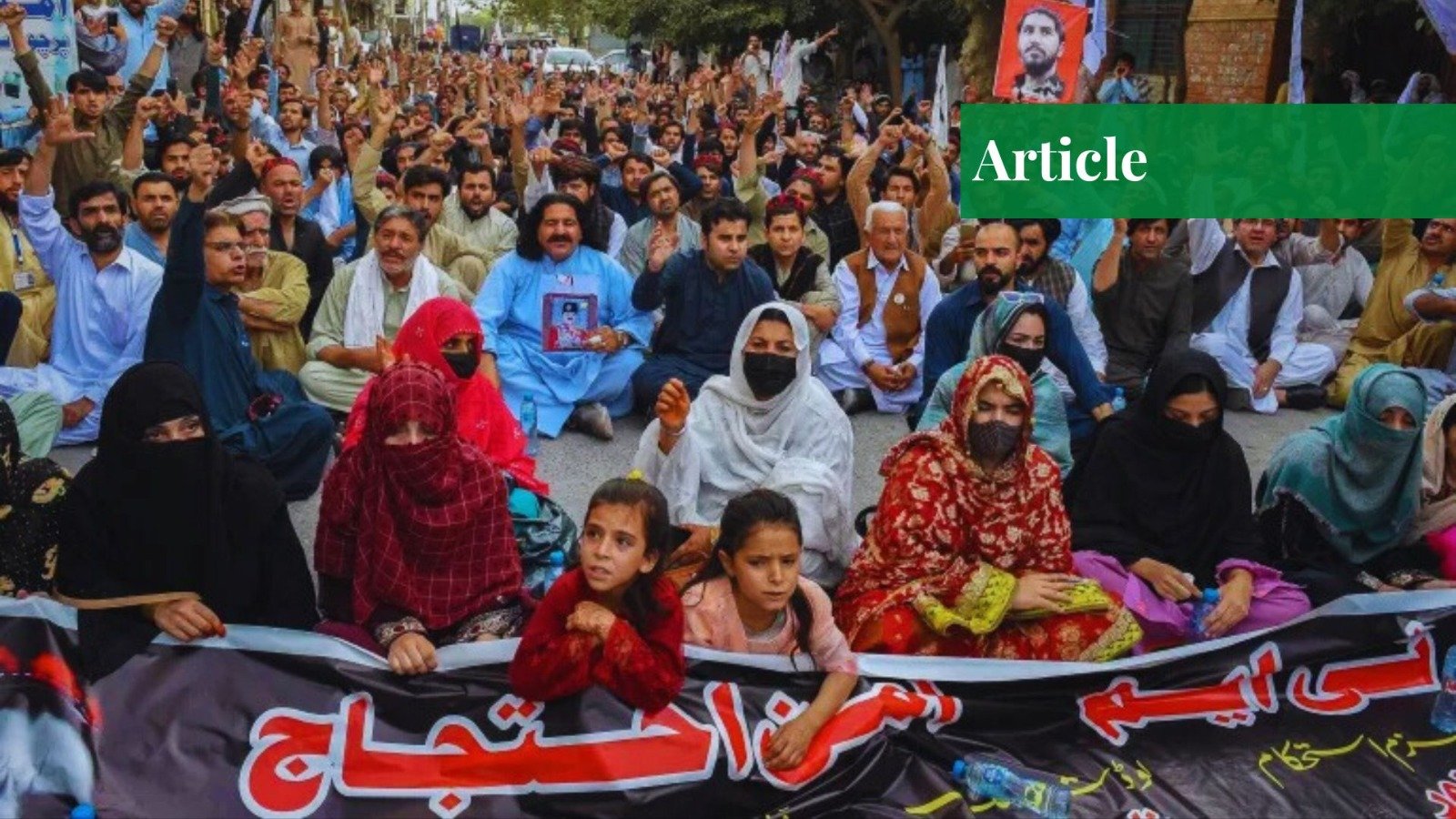Gone are the days when national security was solely the responsibility of the armed forces. In today’s world of hybrid threats, narratives and stories have become weaponized tools used by adversaries to erode public trust in state institutions and sow divisions among ethnic and religious groups. This erosion of trust can weaken the state, exposing societies to prolonged violence. To address these challenges, scholars have developed the concept of “total defense.”
What is Total Defense?
The framework of total defense redefines national security as a shared responsibility of the entire state and society. It emphasizes that civilian institutions, private sector actors, and all citizens must contribute to national resilience, response, and recovery alongside the armed forces and civil protection agencies. A key component of this framework is the use of narratives and stories as defensive tools in the civilian sphere, countering the weaponization of disinformation and distorted facts by adversaries.
What Are Narratives and Stories?
A narrative is a culture-defining myth into which individuals are born and socialized. Through this process, cultural norms, identity, beliefs, and meaning are internalized, forming a mental framework that organizes and makes sense of the information individuals receive in their lifetime. A narrative attack targets this cultural foundation, undermining the shared myth that defines a culture and its people.
A story embodies the core ideas, values, and patterns of the larger cultural narrative, both in its content and form. Stories are specific instances of broader cultural narratives, carrying their essence in what they say and how they unfold. While cultural narratives are often unconscious, stories are more visible and tangible. A narrative attack weaponizes storytelling to disrupt a culture’s meaning and identity at personal, community, and national levels.
The Role of Narratives and Stories in Destabilizing Societies
Narratives and stories play a pivotal role in destabilizing societies by targeting general populations and eroding societal trust. They are often designed to sow doubt and mistrust between citizens and their states, as well as among different groups within a society. Without trust, the social fabric weakens, leaving both states and societies vulnerable to external and internal threats.
Innovations in digital technology have amplified the reach and impact of such narratives, often outpacing the ability of states and societies to build resilience or adapt to crises. This is evident in Pakistan, where adversarial narratives and stories target trust between the state and its citizens, particularly in regions like Balochistan and Khyber Pakhtunkhwa. However, this article focuses on Khyber Pakhtunkhwa, leaving Balochistan out of the discussion.
Pakistan’s Response to Narrative and Story Attacks
Pakistan has a national narrative framework and a national committee dedicated to narrative building, guided by the framework outlined by the National Counter Terrorism Authority, NACTA. This reflects the state’s awareness of the “battle of narratives” as mentioned in point 11 of the national framework.
The framework primarily focuses on terrorism and extremism, with 7 out of 12 points addressing religious extremism. This focus is justified, as much of the extremism and terrorism in Pakistan is either motivated by or claimed to be motivated by ideological considerations rooted in religion. However, only two points (9 and 11) address non-religious extremism, such as ethnic nationalism and language-based motives. Even these are framed within the broader context of terrorism.
What the framework lacks is attention to the issue of state-citizen trust, which is under constant attack through a mix of disinformation, half-truths, and manipulative narratives and stories. This gap leaves a critical vulnerability unaddressed, particularly in Khyber Pakhtunkhwa.
Narratives and Stories Against Pashtun Trust Culture in Pakistan
In developing countries like Pakistan, trust between citizens and state institutions is often fragile. However, a longstanding trust culture exists between the state of Pakistan and its Pashtun citizens. This trust is reflected in the significant presence of Pashtuns in state institutions, their active participation in Pakistan’s economy, sports, and education, and their physical presence across the country, from Khyber to Karachi.
Historical Foundation of Trust
This trust culture partly stems from the groundwork laid during British rule, which began integrating Pashtuns into civil and military institutions and introduced education and healthcare in settled districts of present-day Khyber Pakhtunkhwa. While the tribal areas were largely exploited for strategic purposes, some small steps were taken to introduce tribal societies to modern state-citizen relations. These included the settlement of certain Waziristan tribesmen in DI Khan and Bannu, the establishment of the first school in Parachinar, and limited land settlements in parts of Kurram, Khyber, and North Waziristan.
Pakistan inherited this trust foundation and further integrated Pashtuns into the state, though it fell short in addressing the socio-economic development of the tribal areas and continues to use the tribal area for strategic purposes. Despite these shortcomings, trust—or at least trust in the hope for future betterment—has historically prevented large-scale revolts in tribal areas, even in the absence of a Pakistan Army presence.
Weaponized Narratives Targeting Pashtun Trust
This longstanding trust is now under attack through weaponized narratives and stories, particularly via social media. These narratives and stories exploit the brain’s System 1 (quick, intuitive decision-making) by overwhelming individuals with a flood of manipulative content, making it difficult to separate fact from fiction.
Weaponized narratives and stories blend factual information with distortions or outright falsehoods. For example, while it is true that Pashtuns disproportionately suffered during Pakistan’s war on terror, fabricated stories—such as claims that the Pakistan Army kidnapped women in Swat—are circulated without evidence. These narratives aim to portray Pakistan as an enemy of the Pashtuns, eroding trust and sowing division.
How can an ordinary mind make sense of such a situation? Scholars agree that this leads to systematic distortions in reality perception, with significant political implications for both state and society. The process unfolds as follows: narratives and stories evoke feelings, feelings shape perceptions of reality, and perceived reality forms opinions and attitudes. These opinions and attitudes, often shaped under the brain’s quick-thinking System 1, carry political consequences, as most people lack the time or resources for deep analysis to separate fact from fiction.
In Pashtun areas, this dynamic is evident. Social media narratives and stories—often based on real or perceived grievances like forced disappearances, targeted killings, and suffering during military operations—generate feelings of resentment against the state. These feelings are perceived as reality, shaping opinions and attitudes that strain state-citizen relations. For instance, some Pashtuns now find their identity and belonging torn between Pakistan and Afghanistan.
Broader Challenges: Polarization, Afghanistan, and Beyond
Increasing Polarization
Narratives and stories, in the wake of increasing polarization, have further complicated the situation. Pashtun supporters of the provincial ruling party prioritize their leader above all else, politicizing Pashtun suffering to pressure the federal government and military. This politicization has left the Khyber Pakhtunkhwa province, where the party rules, poorer, more backward, and vulnerable to terrorism, as the rulers pay extortion to militants while supporting the pro-TTP stance of their leader.
Meanwhile, the ongoing violence against civilians and police and the increasing socio-economic backwardness in the province are overlooked. Ultimately, these sufferings are recycled into narratives and stories that further erode trust between Pashtuns and the state of Pakistan.
Identity Conflict between Pakistan and Afghanistan
Afghanistan’s ongoing identity conflict with Pakistan is another significant issue. While Pakistan recognizes Afghanistan’s Pashtun identity, Afghanistan refuses to accept Pakistan’s Islamic identity. Afghanistan has developed effective tools to preserve its own identity while undermining Pakistan’s. Through Pashto poetry and music, Pakistan is portrayed as an unnatural state and an occupier of Afghan territory, specifically the Pashtun areas of Pakistan.
These cultural media invoke historical events and current sociopolitical and security issues in Pashtun regions to craft narratives and stories that erode trust between Pakistan and its Pashtun citizens. Over time, Afghanistan has promoted a Pakistan-hating cultural narrative targeting Pashtuns in Pakistan.
India and Israel’s Role
India is also actively targeting Pashtun areas with similar narratives on social media. My concern is that Israel may soon join this effort. Israel could exploit the unsubstantiated theory that some Pashtuns are descended from Jews, an idea already being explored by Israeli intellectuals. Israeli scholars have reached out to Pashtun diaspora members from Afghanistan, inviting them to Israel and producing literature on Pashtuns. However, this growing interest appears aimed not at benefiting Pashtuns but at generating knowledge about Pashtuns that can be weaponized to destabilize Pakistan and create further violent chaos in Pashtun regions.
Way Forward: Countering Adversarial Narratives
To address narratives and stories undermining trust between the state and society, the following steps must be urgently taken:
- Incorporate Total Defense in NACTA’s Framework: Integrate the concept of “total defense” into NACTA’s national narrative framework, focusing on countering narratives and stories attacking trust between state and citizen.
- Proactive Narrative and Story Creation: Collaborate with diverse voices from Pashtun society to actively craft narratives and stories that foster trust between the state and its Pashtun citizens. Reactive counter-narratives alone are insufficient.
Two Types of Narratives
- Historical Narratives: Highlight examples since 1947 that emphasize the enduring trust between the state and its Pashtun citizens.
- Contemporary Narratives: Highlight present-day efforts, including state initiatives in healthcare, education, law and order, disaster management, and intelligence-based counterterrorism operations carefully designed to minimize civilian casualties.
Fact-Based Storytelling
Narratives and stories must be grounded in verifiable facts, not in myths. While historical examples are readily available, finding present-day trust-building examples requires deliberate state action and contribution.
Concrete Actions
Given the disproportionate suffering of Pashtun areas during the war on terror, the state must:
- Eliminate terrorism (even pursuing militants into Afghanistan if necessary) in intelligence-based operations.
- Improve socio-economic conditions and the law and order situation
- Address environmental challenges.
- Stories rooted in these efforts can effectively counter anti-Pakistan narratives and stories and protect and promote trust between the state and its Pashtun citizens.
If you want to submit your articles and/or research papers, please visit the Submissions page.
To stay updated with the latest jobs, CSS news, internships, scholarships, and current affairs articles, join our Community Forum!
The views and opinions expressed in this article/paper are the author’s own and do not necessarily reflect the editorial position of Paradigm Shift.
Dr. Farhat Taj is an associate professor at the University of Tromsø, Norway. Dr Taj leads major research initiatives, including VEIBIE (Welfare, Technology & Law) and IDMC (Internal Displacement Monitoring Centre) projects. She is also a researcher associated with the Institute of Policy Studies, Islamabad. Dr Taj has authored over 18 research publications exploring critical themes such as legal pluralism and Islam in Norway, migration and religion in Europe, and the local adoption of universal human rights norms.



